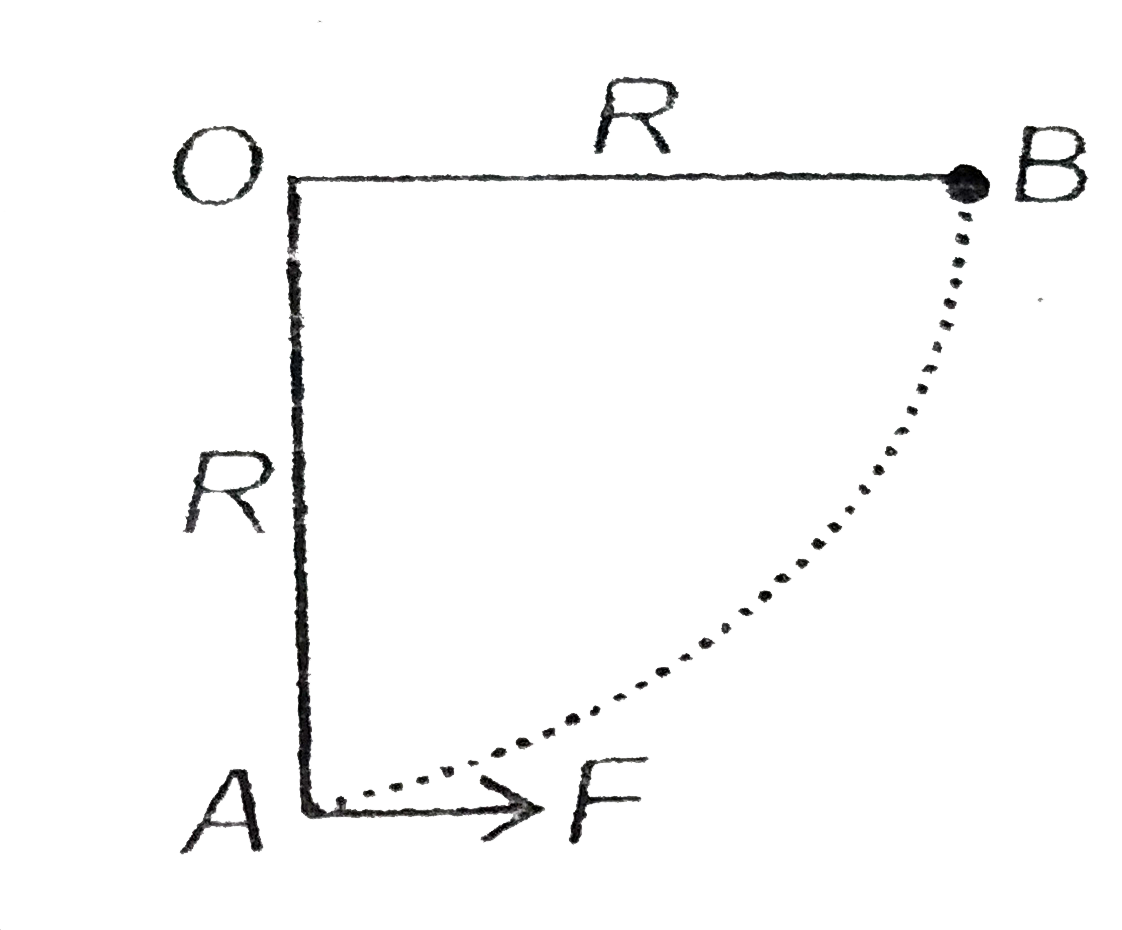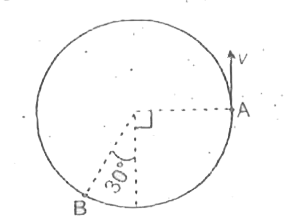AB is a quarter of a smooth circular track of radius 4 m as shown in the figure. A particle P of mass 5 kg moves along the track from A to B under the action of the following forces

(1) A force F1 directed always towards point B, its magnitude is constant and equals 4 N,
(2) A force F2 that is directed along the instantaneous tangent to the circular track, its magnitude is (20-s) newton where s is the distance travelled in metre.
(3) A horizontal force F of magnitude 25 N.
Find the workdone by each force.
(i) Work done by force F1 As shown in figure, let the particle be at point P at some instant of time t = t. The particle moves from position P to position Q in small interval of time dt. The direction of force on particle P will be in the direction PB. The small amount of work done in time dt is
dW1=F1.ds=F1cosθ.ds=F1cosθ.Rdθ
∵ds=Rdθ=16cosθdθ (∵R=4mandF=4N)
Now the total work done as the particle moves from A and B is given by
W1=∫π/4016cosθdθ=16[sinθ]π/40=16(1√2)=(8√2)=11.30 joule .......(1)
(ii) Work done by force F2 In the case, dW2=F2×ds=(20−s)ds
But s=Rθandds=Rdθ ∴dW2=(20−Rθ)=(20−4θ)×4dθ
W2=∫π/40(80dθ−160dθ)=80[θ]π/40−16[θ22]π/40=80×π4−162(π4)2=(62.83−4.93)=57.9J ....... (2)
(iii) Work done by force F3
The magnitude of F3 is 25 N which is always horizontal.
The net displacement of the particle is OB.
Hence the work done W3=25×4=100 joule ...........(3)
Similar Questions
AB is a quarter of smooth circular track of radius R=6m. A particle P of mass 0.5kg moves along the track from A to B under the action of the following forces.

a. A force F1 directed always towards the point B, its magnitude is constant and is equal to 20N.
b. A force F2 directed along the instantaneous tangent to the circular track, its magnitude is (15−10S)N, where S is the distance travelled in metre.
c. A horizontal force of magnitude 30N.
Find the work done by forces mentioned in (a), (b) and (c)
View SolutionAB is a quarter of smooth circular track of radius R=6m. A particle P of mass 0.5kg moves along the track from A to B under the action of the following forces.

a. A force F1 directed always towards the point B, its magnitude is constant and is equal to 20N.
b. A force F2 directed along the instantaneous tangent to the circular track, its magnitude is (15−10S)N, where S is the distance travelled in metre.
c. A horizontal force of magnitude 30N.
Find the work done by forces mentioned in (a), (b) and (c)
View Solution
Knowledge Check
A particle of mass M moves with constant speed along a circular path of radius r under the action of a force F. Its speed is
A√rFmB√FrC√FmrD√FmrA particle of mass m moves from A to C under the action of force →F=2xyˆi+y2ˆj , along different paths as shown in figure.
 AForce is conservative in natureBWork done by force is 13 when particle moves along path ABCCForce is non conservative in nature and work done along path AC is 1 JDWork done along path ADC is 145J
AForce is conservative in natureBWork done by force is 13 when particle moves along path ABCCForce is non conservative in nature and work done along path AC is 1 JDWork done along path ADC is 145J
A block of mass m is taken from A to B under the action of a constant force F. Work done by this force is

View SolutionA block of mass m is taken from A to B under the action of a constant force F. Work done by this force is

View SolutionA particle of mass M moves with constant speed along a circular path of radius r under the action of a force F. Its speed is
View SolutionA particle of mass m moves from A to C under the action of force →F=2xyˆi+y2ˆj , along different paths as shown in figure.

View SolutionA particle of mass m moves with constant speed v on a circular path of radius r as shown in figure. The average force on it during its motion from A to B is

View SolutionA particle of mass m moves with constant speed v on a circular path of radius r as shown in figure. The average force on it during its motion from A to B is

View Solution
